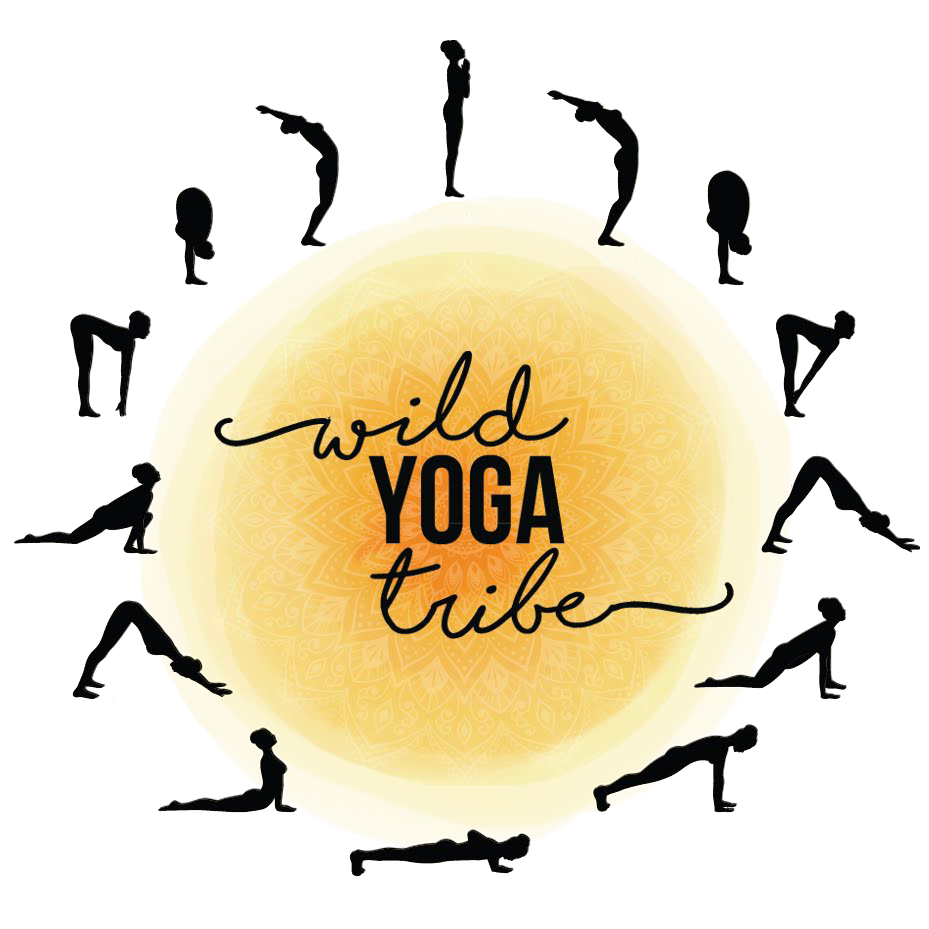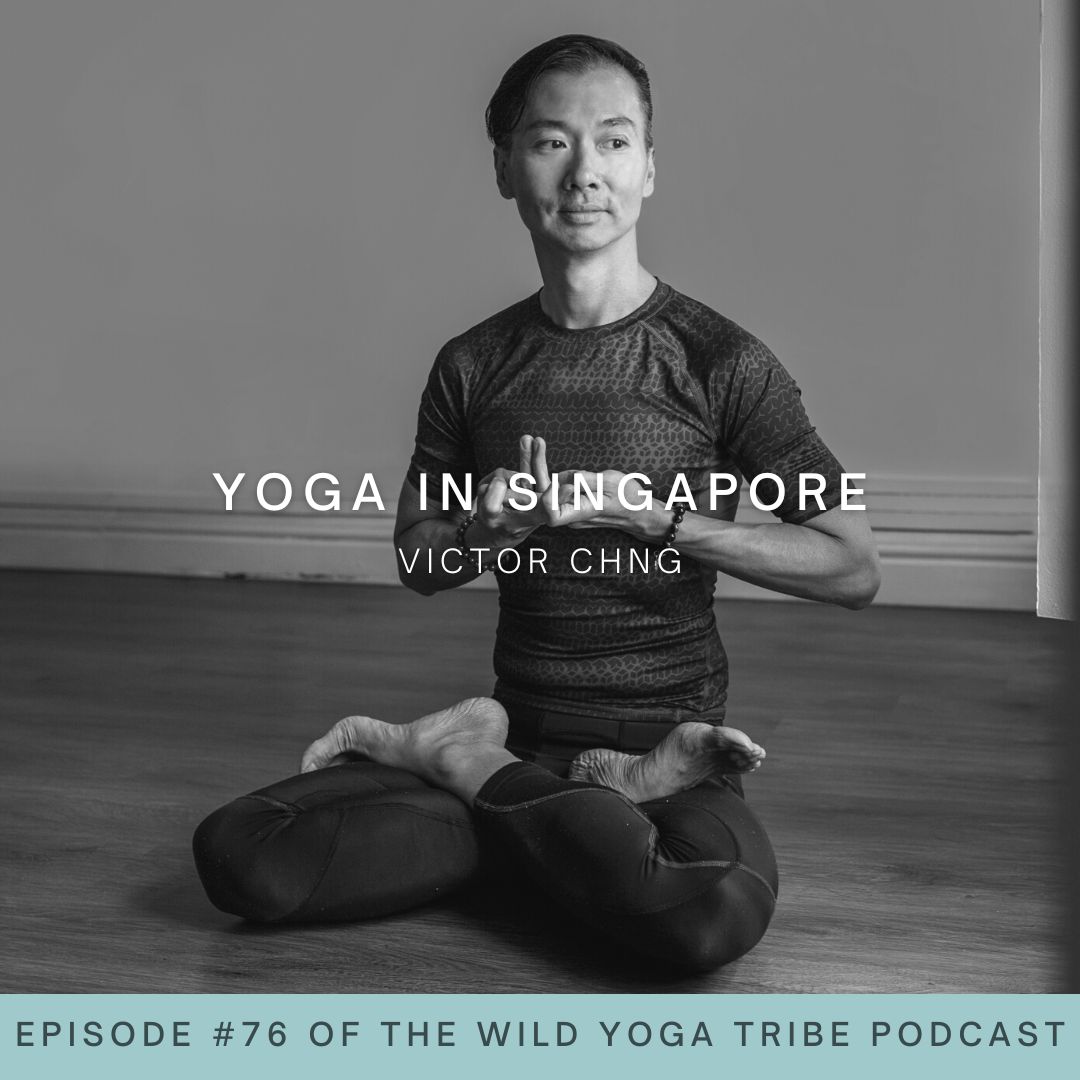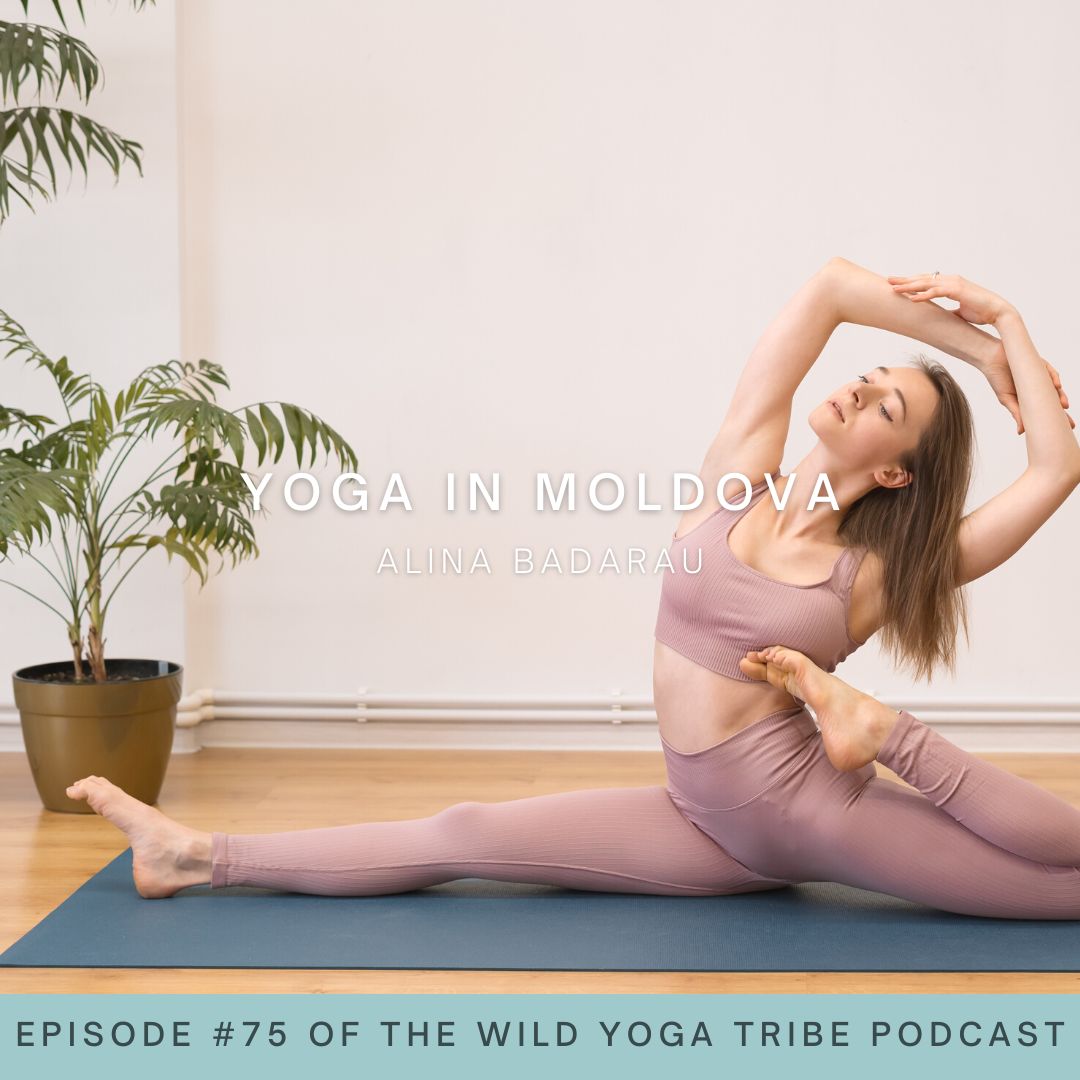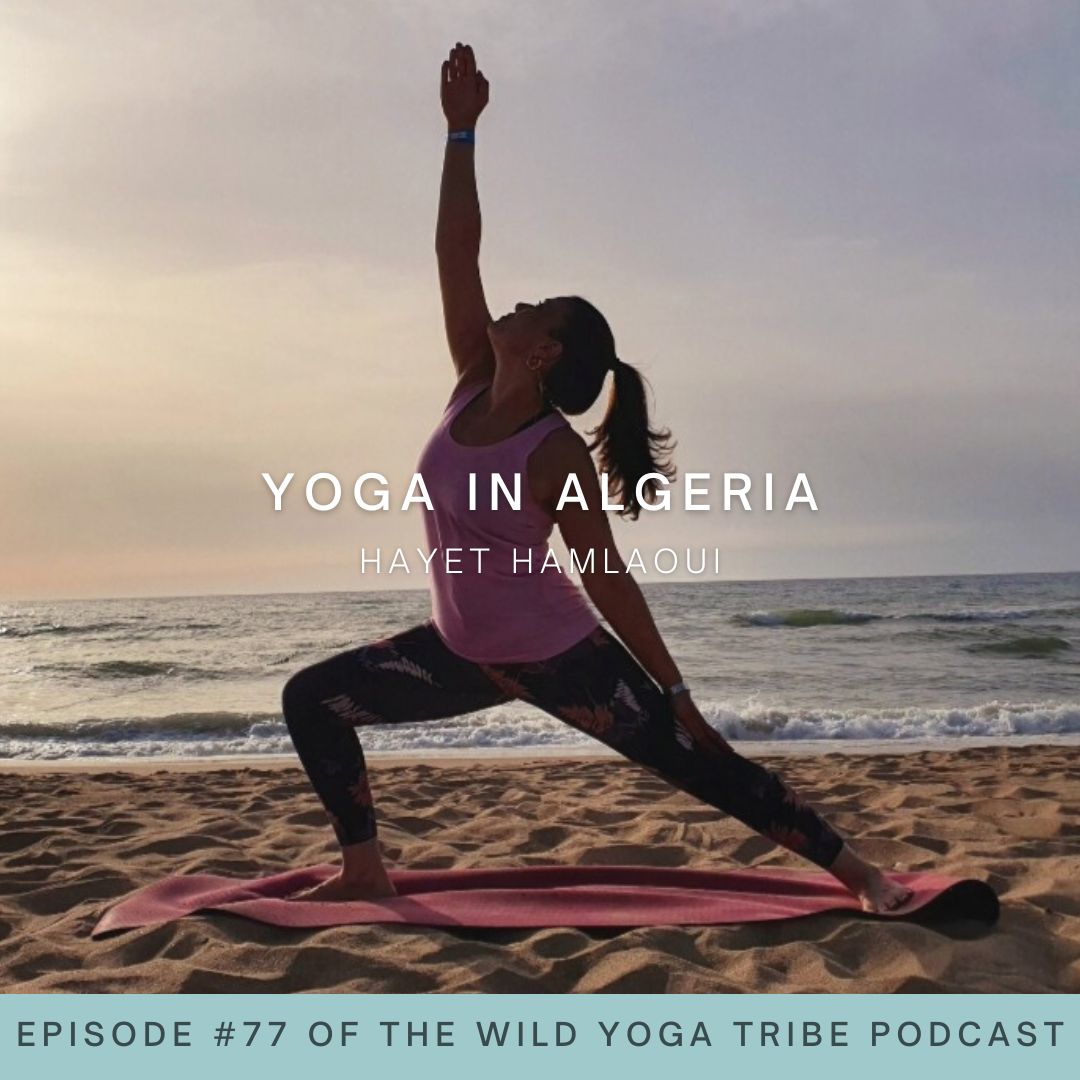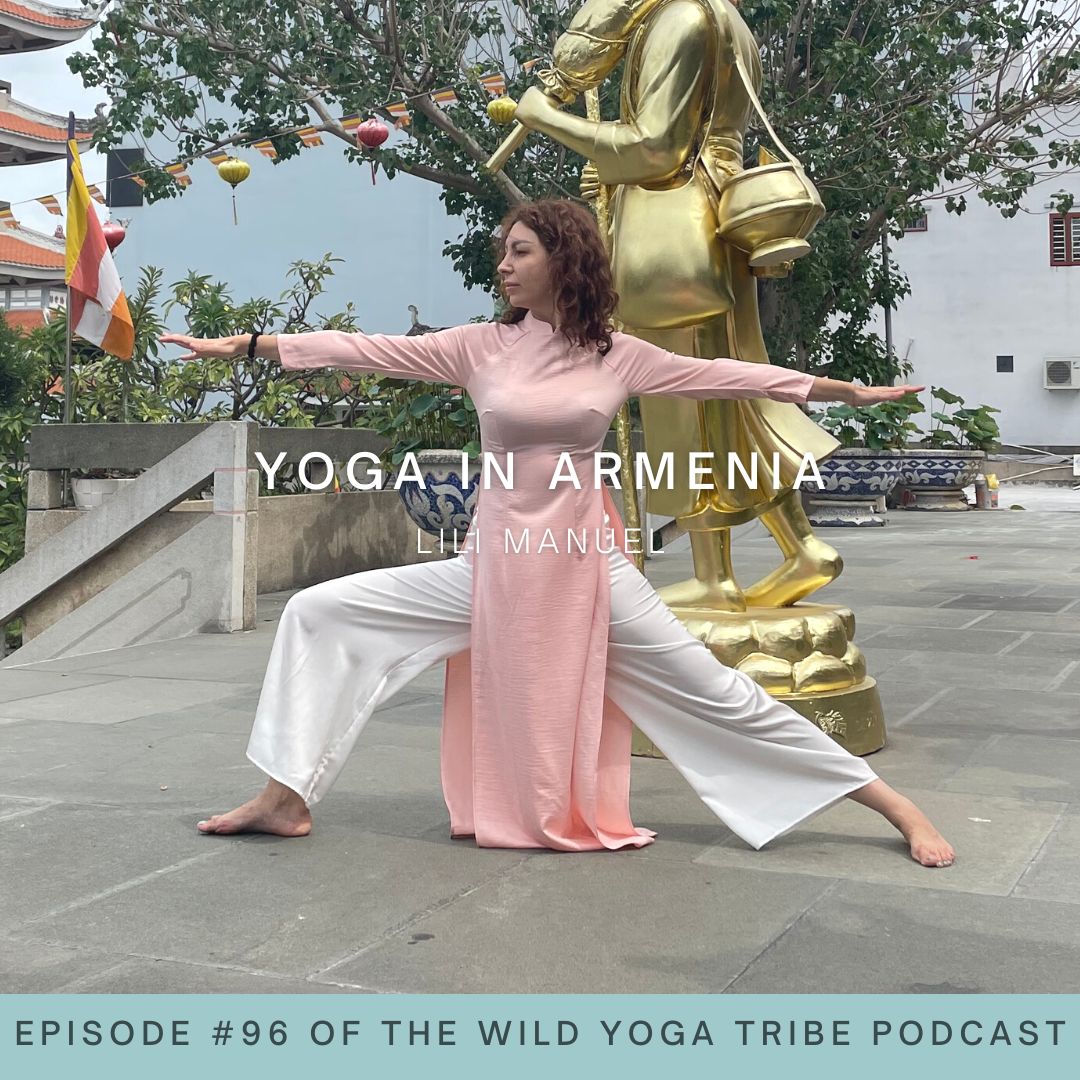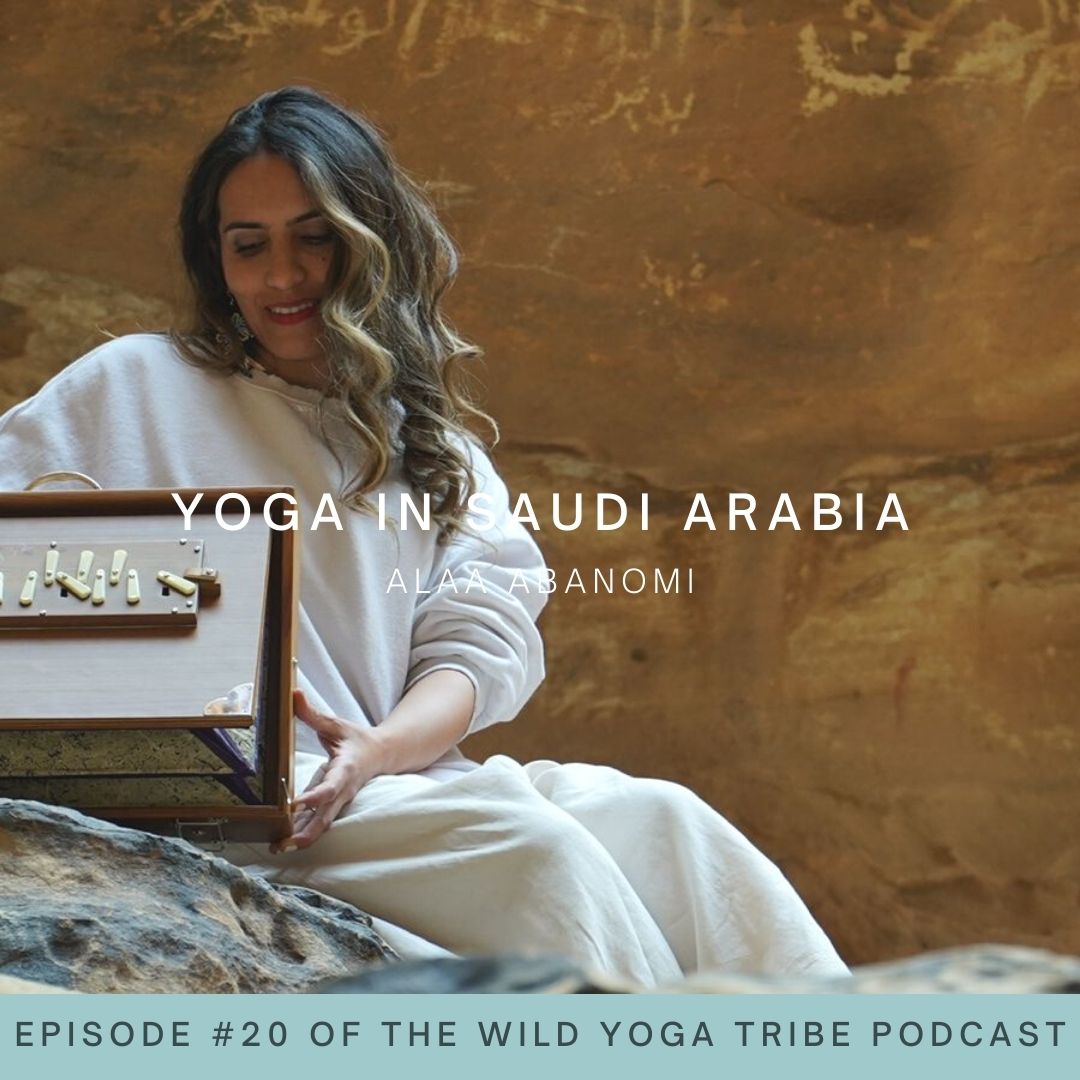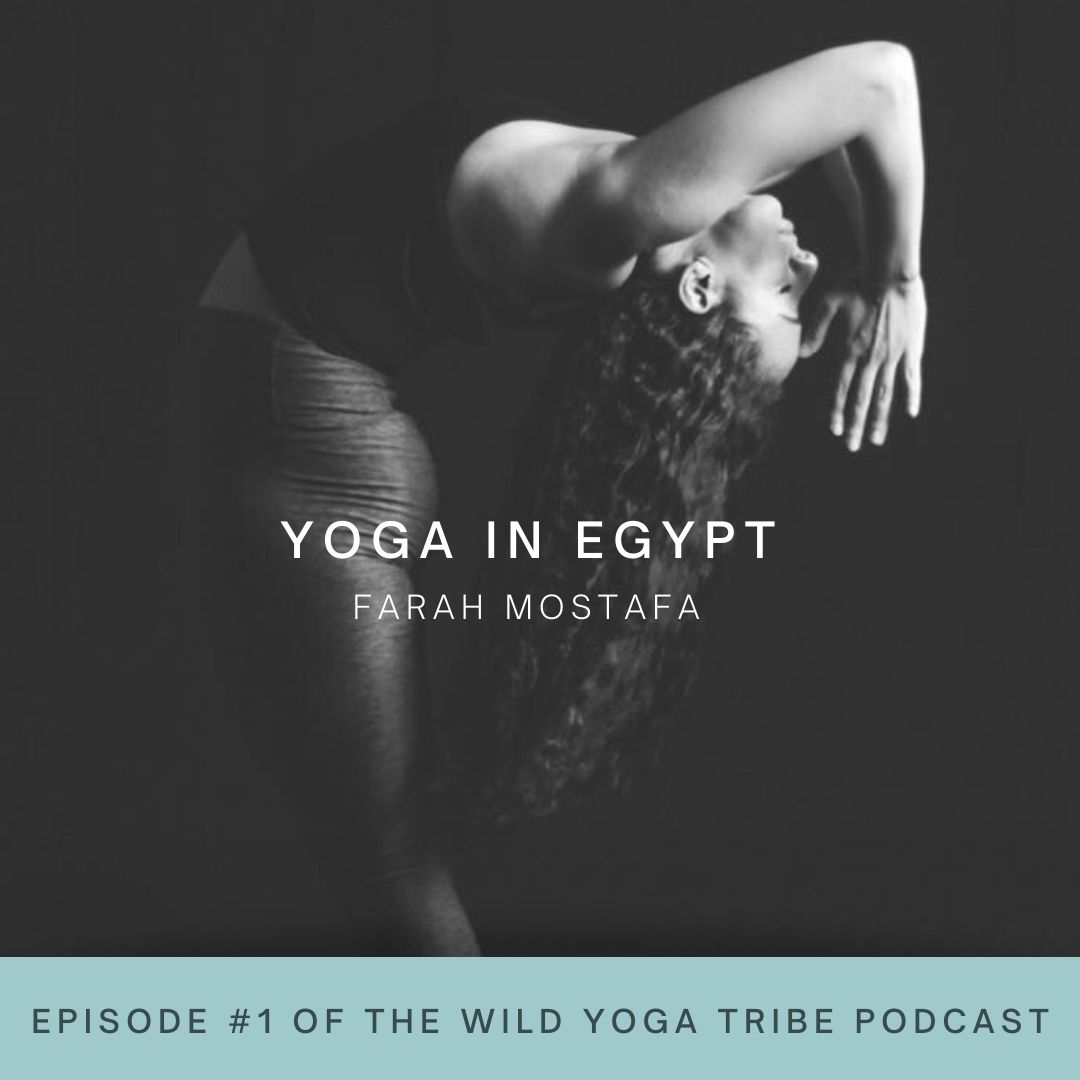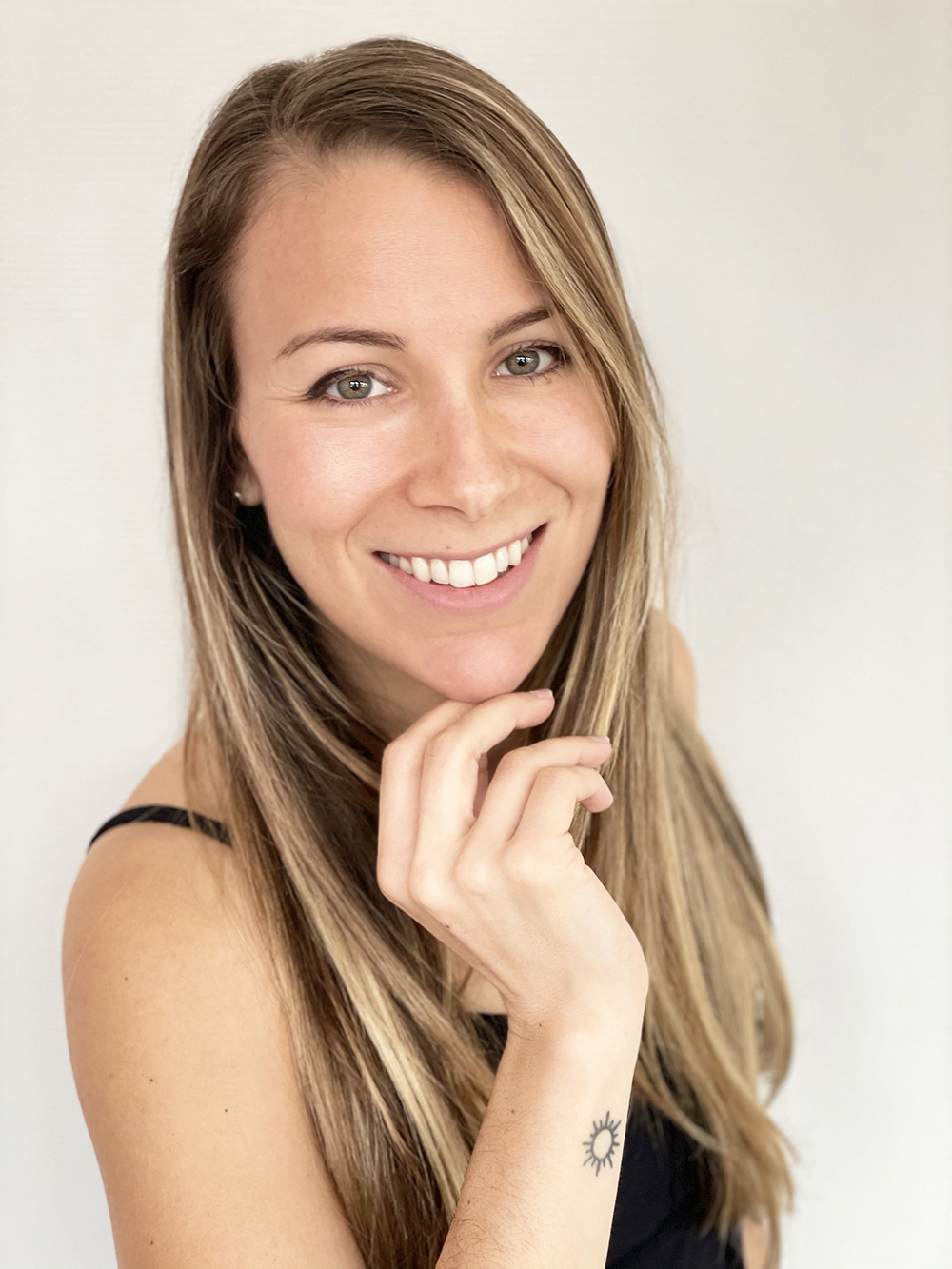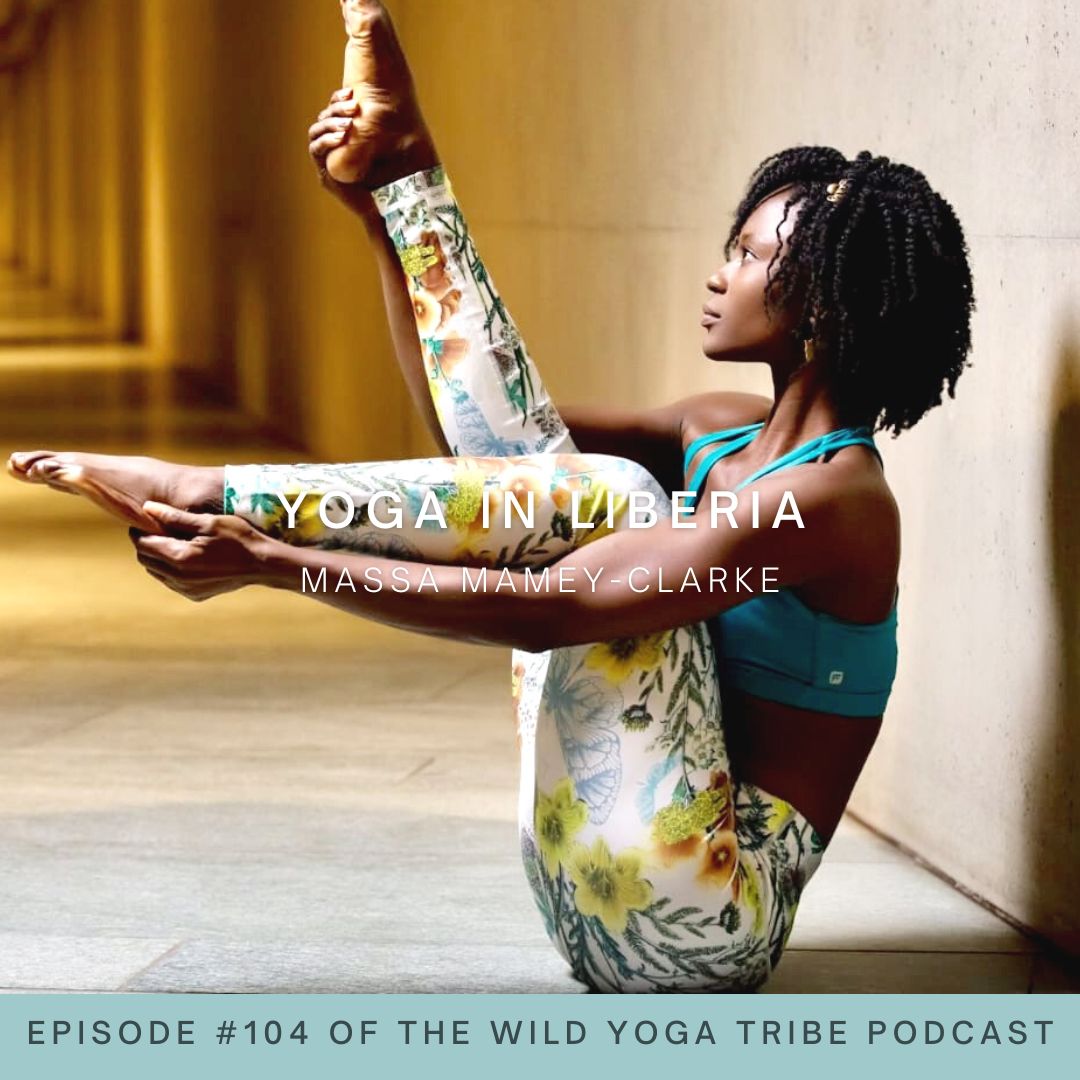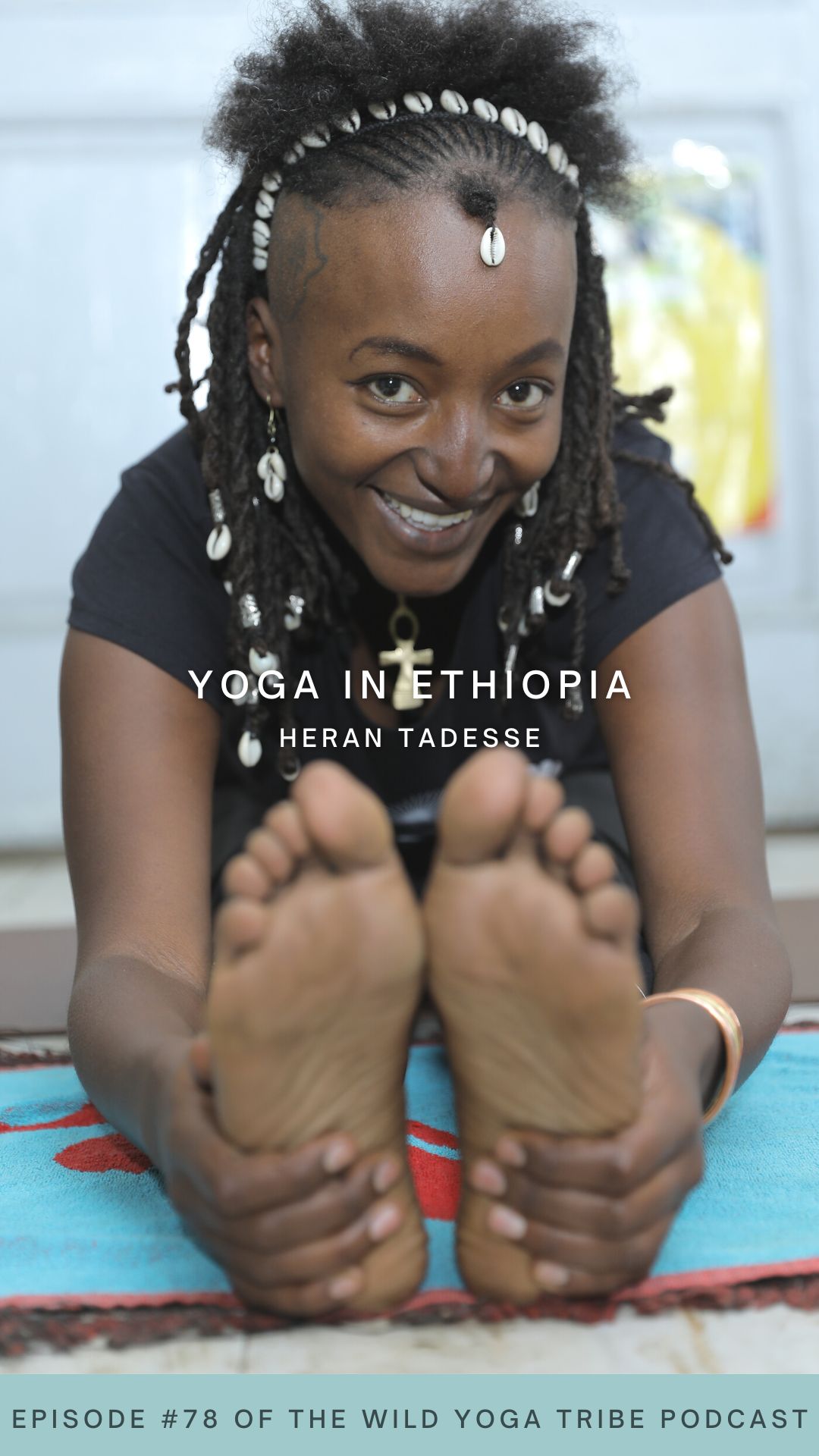
EPISODE #78 – YOGA IN ETHIOPIA
Meet Heran Tadesse
Meet Heran Tadesse a yoga teacher from Ethiopia who takes walks us through what the institutions of Kemetic Yoga and Afrikan Yoga are all about. Welcome to yoga in Ethiopia!
Wild Yoga Tribe Podcast #78 – Afrikan Yoga & Kemetic Yoga – Yoga in Ethiopia with Heran Tadesse
Welcome to Episode #78 of the Wild Yoga Tribe Podcast! My conversation with Heran Tadesse, a yoga teacher from Ethiopia, was so fascinating as we took a deep dive into African yoga and Kemetic yoga. I hope that this conversation made you curious about how yoga can help transform you into a vessel for peace, acceptance, and love.
If you’re looking to tune into a podcast episode that is all about yoga in Ethiopia, then this is the conversation for you.
Tell me more about Heran Tadesse
Heran Tadesse is a yoga teacher from Ethiopia who has been teaching yoga for 9 years in several studios in the capital city of Addis Ababa. She teaches prenatal/postnatal yoga, and is a mother herself. As a student, she started off with Hatha Yoga. She was trained in Kemetic Yoga in Egypt and Afrikan Yoga in Kenya.
What to expect in the Yoga In Ethiopia episode of the Wild Yoga Tribe Podcast
Heran was adopted from Ethiopia as a baby, and was raised in the Netherlands. She studied tropical forestry in University, and first came to yoga at that time in her life. She practiced and attended classes for 10 years before attending a yoga teacher training in Belgium. After receiving a job offer in Addis Ababa, she returned to Ethiopia. She works in the educational sector and teaches yoga in multiple studios.
Heran then took us on a deep dive of what Kemetic Yoga, which has it’s roots in ancient Egypt which pre-dates yoga in India, though it is no longer a living part of Egyptian culture. It’s about reconnecting with the ancestors, and is modeled after the hieroglyphics. It’s akin to Iyengar yoga, with strict, static poses.
Afrikan yoga was founded by a man from Jamaica who is based out of Kenya. This style draws upon movements that people make, in the whole Nile Valley. This could be movements that fishermen make, or women who are grinding wheat. There are series of movements, with a lot more flow and, in fact, dance. There is a huge focus on relating to the elements.
Heran also walked us through all the diversity and beauty of her country, and about the history of yoga in Ethiopia and where she sees yoga going into the future. As there are only 20 yoga teachers, approximately, in her country— and as she is the most experienced practitioner in her country, she is often stopped on the street and people shout “yoga!” At her. The whole city knows her as the yoga teacher.
Favorite Quote From Heran Tadesse
“Yoga has also given me the strength and the bravery to just stay with my breath and Seeing myself and my body and my practice as a vessel for more peace, more acceptance, and more love.”
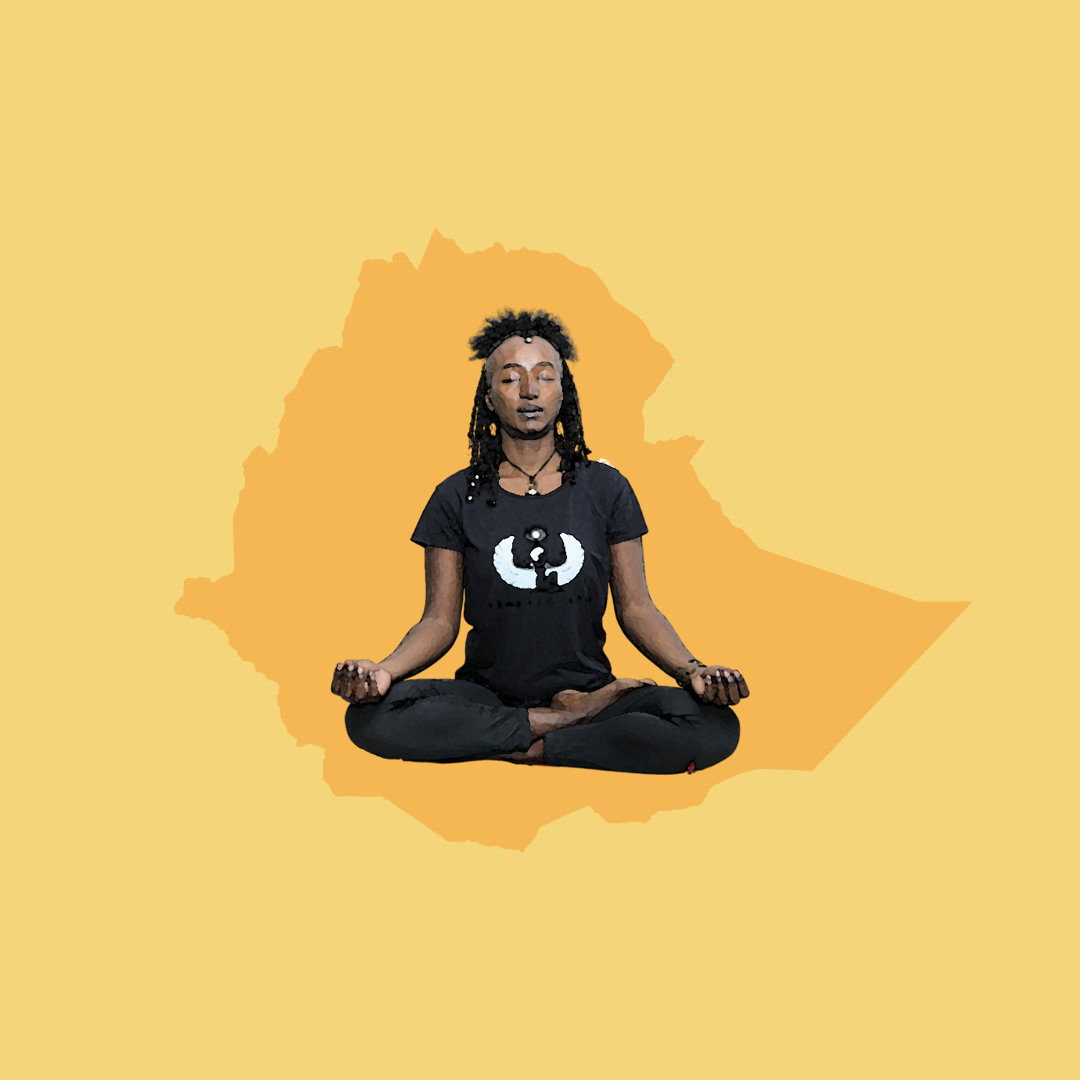
What’s in the Yoga in Ethiopia?
Feel like skimming?
The institutions of Afrikan yoga and Kemetic yoga
Kemetic yoga is based on hieroglyphics
Afrikan yoga based on the natural movements of people in the Nile Valley and the elements
Gatekeeping and the inaccessibility of yoga
Being a vessel for more peace, acceptance, and love
The growing scene of yoga in Ethiopia
Connect with Hayet
https://www.facebook.com/heran.tadesse
https://ethioyogaqueen.wordpress.com
https://www.facebook.com/EthiopianYogaQueen
https://www.instagram.com/HeransYoga
Support the podcast:
https://www.patreon.com/wildyogatribe
Want more?
https://wildyogatribe.com/thepodcast/
Everything you need is just one click away! Check out all the resources here: https://linktr.ee/wildyogatribe
PODCAST TRANSCRIPTION
Read + Reflect + Respond
Wild Yoga Tribe Podcast Episode #78 Yoga in Ethiopia with Heran Tadesse Transcript
[00:00:00] Lily Allen-Duenas: Namaste family and welcome back to the Wild Yoga Tribe Podcast. Today, I am so excited to welcome Heran Tadesse, a yoga teacher from Ethiopia onto the show today. She’s been teaching yoga for nine years in several studios in the Capitol City of Addis Ababa. She teaches prenatal and postnatal yoga and is a mother herself. As a student, she did start off with Hatha yoga, though she now is trained in kinetic yoga, which she got trained in Egypt and Afrikan yoga where she received her training in Kenya. So thank you so much, Heran for joining me on the show today.
[00:00:40] Heran Tadesse: I’m so happy to be here. Thank you for inviting me.
[00:00:43] Lily Allen-Duenas: Thank you. And so, first question, let’s get to know you better. Let’s learn how yoga came into your life and how you got started on the path.
How did yoga come into your life
[00:00:53] Heran Tadesse: Yes, I guess I should start with the fact that I was adopted from Ethiopia to the Netherlands. And I was raised in the Netherlands and during my studies in university I studied tropical forestry because I wanted to come back to Ethiopia and do something meaningful. I focused on forestry, but while I was in university, I got introduced to a lot of other hippies and tree huggers, and I got introduced to yoga as well from that community. So, actually there, there was a guy I liked [00:01:30] and he, he encouraged me and he was an inspiration to me.
So, that was my initial push to get over that little barrier you may have before you try something new. So I started yeah, 19 years ago. That was when I went to my first class and been in love with it ever since.
[00:01:54] Lily Allen-Duenas: Amazing. I know exactly what you mean about just, showing up, trying it, falling in love with it, and then developing this lifelong relationship to yoga. It’s, it’s amazing. I know that the guy got you in, and that was probably not a long–, I don’t know the whole story of it, obviously, but that relationship ended, but the relationship with yoga just started ugh, that’s awesome.
[00:02:17] Heran Tadesse: Exactly.
[00:02:19] Lily Allen-Duenas: And when did you decide to come back to Ethiopia and teach yoga there? And what was that kind of journey and genesis like for you to become a yoga teacher?
How did you decide to become a yoga teacher?
[00:02:28] Heran Tadesse: So I practiced and I attended classes for about 10 years before I started a yoga teacher training in Belgium, which would’ve been more hatha yoga with Sivananda. But then at the same time, I got a job offer at the university here in Addis Ababa. So I had to make a choice, but I knew that I wanted to share yoga with my people.
And I started working [00:03:00] in my field, the field of environment and did that for some years… until I got my children, and once I became a mother, I realized I didn’t want a full-time job in the office in particular. And so that’s when I started teaching yoga part-time. That was in yeah, maybe 2013. Yes.
So yeah, that’s when I started a teacher training first and then started teaching. So I focused on the pregnancy yoga first, cuz I was pregnant at that time. So while I was doing my teacher training, I was pregnant so I could really sense what pregnant women go through and how much yoga can be a relief.
So that really inspired me. And from there I continued training and expanded my reach from just pregnant women to just everyone basically. And yeah, that’s how I ended up doing yoga here. And by now I’m not like so much active in the environmental fields, but I am in the educational sector, so yoga is something that, yeah, I teach five, six classes a week and then do my other jobs on the side. I don’t really financially depend on [00:04:30] yoga, but it is my passion and so it’s lovely to be able to share it here.
[00:04:37] Lily Allen-Duenas: Oh, absolutely, and I love hearing that you went through your prenatal postnatal yoga teacher training when you were pregnant because when I did mine, I’ve never been pregnant before and I did one when I wasn’t pregnant either, and I think it would’ve been a much more intimate and profound experience to have been pregnant at the time of doing that.
So that’s amazing. And I’d love to hear also about these institutions of Afrikan yoga and Kemetic yoga. Kemetic yoga is actually something I’ve never heard of. So for our listeners, and for me, could you tell us more about these two institutions?
What is Kemetic Yoga?
[00:05:13] Heran Tadesse: Yes. Let me start with Kinetic Yoga. So that was my second certification program I went through. It was developed by my master called Yirser Ra Hotep. He is an African American who was based in Chicago and spent over 40 years studying the scriptures of ancient Egypt and the hieroglyphs and all the sculptures and the images on the temple walls.
And he’s practiced yoga and martial arts, but he also discovered that it was actually a practice that was done back in the day. We see a lot of similarities with India and also some [00:06:00] with other parts in Africa, so he has been invited on the Oprah show. He has been teaching Kemetic yoga all over the world and traveling for the past 30 years.
So when he came for teacher training to Egypt, that’s when I decided to register with him. And Kemetic yoga is also internationally under the Yoga Alliance. So it is a recognized form of yoga, which has its roots in ancient Egypt, which actually predates any yoga in India, but it is no longer lived. So, it is a history that died out, especially when Egypt was invaded and the country is Islamic now.
A lot of things are considered haram, but in India, it’s spread from ancient Egypt to other parts in the world and it blossomed in India. And so that’s why we still see it there today as a living culture. But as African people, as Black people reconnecting to our ancestors with a practice that was developed by Africans really makes a lot of sense. in general, there are also many similarities with other forms of yoga, but there are some specific poses and sequences that can only be [00:07:30] found ancient Egypt. And when we go through them very slowly with the breath, then we realize that this is the first form of yoga.
What is Afrikan Yoga?
[00:07:38] Heran Tadesse: Then, about Afrikan yoga, there is another master teacher, he’s called Pablo Imani.
He is originally from Jamaica, but he lived in the UK for many years. Right now he’s based in Kenya and his style is different in the sense that it draws upon movements that people make in the whole Nile Valley, the whole Horn of Africa; so it could be movements that fishermen make or women when they are grinding.
And in addition to movements that are part of daily life contemporarily, he also has brought in his own inspiration and developed series of movements, and some of them are around the same topics as it comes to deities from ancient Egypt. But it really differs in the sense that there is a lot more flow to it.
We dance more and we really focus on relating to the elements like water, like air, Earth, and fire. So Afrikan yoga incorporates more [00:09:00] dancing, incorporates these elements and then contemporary movements, whereas Kemetic yoga is really something that we can find on the pyramid walls. So these are static poses, which then have been made into different sequences.
Yeah, we have two main rules. One is the rule of four breaths: it’s similar to square breathing, but it allows you to align your breath to the movements in the class. And then the fact that we always move in geometric progression very slowly with the breath. So it’s, it’s the opposite of power yoga.
[00:09:44] Lily Allen-Duenas: Wow, both so fascinating. I, and I love hearing about how it’s about honoring the ancestors, connecting with these hieroglyphic type of poses. And then on the other side, with Afrikan yoga, having it connected to the movements made by the actual community in the Nile Valley, the fishermen, the women grinding wheat, as you said, and dancing and elements like these all feel… that feels so organic where the hieroglyphic Kemetic yoga might feel more yeah, like static. Would you describe it similar to Iyengar, like very kind of strict postures?
Everything has a reason in Kemetic Yoga
[00:10:20] Heran Tadesse: yes. When it comes to Kemetic yoga, it is because we have the blueprints. Everything is done on purpose and the [00:10:30] deeper you research all the theory behind it. There is a reason why the left foot may be slightly in front of the right. It may symbolize our, the feminine energy. Everything has a reason.
And yes, my master is, I would say more strict because it’s also about alignment. And when movements are more flowy and organic, as you say, there is not so much right or wrong. And so I combine these, all these schools of thoughts, like everything that I’ve built up over the past twenty, twenty-one years, and I also use my intuition a lot when I teach, so it really depends on who shows up in class. And depending on, maybe the least experienced person, that would be the base level where, where my class has to be safe for everyone, but also allow for some freedom for people, like at the start or at the end to do their own movements and connecting to themselves; so, to really go within. I feel like I’ve drifted off a little, but…
[00:11:45] Lily Allen-Duenas: Thank you so much for talking more about these institutions and unwinding their roots for us and also describing how they energetically feel. I would also love to hear more from you too, Heran, about what [00:12:00] do you feel like, is like, a huge defining issue that would be facing the global yoga community today? Do you have any kind of thoughts on that?
What are the big issues facing the global yoga community today?
[00:12:10] Heran Tadesse: Yes. I guess it’s two things. One is I do see an increase in the diversity of teachers in general cuz yoga is growing globally. But what I see in Ethiopia, for example, where, our country’s GDP is low, and yoga is considered a luxury. Not everybody can afford to pay for classes when I actually look at the people that need it the most, that makes me wish that it could have just been a culture, where it could be practiced in the park and whoever wants to move, could move.
I realized that of certain religious rules, yoga… and then also the association that sometimes is made with yoga, looking sexy or taking it out of its essence where spirit is what matters most. When it’s taken out of that context, it makes it really difficult for people like us in strictly Islamic and Christian countries to then promote it in a way that people wouldn’t fear it. And also being able to offer it in a way that people can afford it. So [00:13:30] this is something I always struggle with cuz yes, in general, I would like to teach more and go deeper and do more retreats.
And it’s a little bit sad that it’s only mainly the elite and the upper class that can come, or even has the awareness about it. So I hope that yoga continues to grow and in a way grow more mainstream and less threatening to people that are conservative.
[00:14:02] Lily Allen-Duenas: I understand what you mean. Absolutely. There is this gatekeeping element around yoga that there is that threshold for payment or also the threshold of just accessibility.
[00:14:13] Heran Tadesse: Yes.
[00:14:15] Lily Allen-Duenas: And so Heran, I’d also like to ask you too about how yoga has become a lifestyle for you. That’s something you’ve mentioned to me, and I would love to learn about that lifestyle or also about how yoga has benefited you, the gifts it’s given you, why you practice. Anything else you’d like to share in that realm?
Yoga as a lifestyle
[00:14:33] Heran Tadesse: Yeah, sure. Yes, since the first time I attended a class, I knew that it was more than just a class for me. I didn’t know it was gonna grow to this extent where I write about yoga and post about yoga every day. And even though I have a university degree, people only know me as a yogi out here, which is cool cuz it’s something it’s a nice association to [00:15:00] have.
I’ve been on TV a lot, so people recognize me sometimes when I walk on the street and sometimes they just shout, “Yoga”, which is cool. Or they shout, “You go,” when they forget about the spelling. But it’s still something relatively new out here in Ethiopia. It is growing. And I think after a few years, maybe three years after practicing yoga, I became vegetarian at first, and then I was vegan for a couple of years until I had my children.
Basically for almost the same amount of time… Yeah, I didn’t have like meat for 17 years, for example. And that is already a weird thing out here, cuz people love meat when it’s available. My diet has been adjusted, and because of that also my sensitivity, my awareness of my body, what I eat, and the movement that I need.
When I compare myself to many other women that have had three children, I really consider myself lucky, and I know that it is that combination of yoga, which brings in that pranic energy, and then better food choices that I’ve made to basically maintain my youth and having this tool, knowing that no matter what pain I have in my body, usually [00:16:30] I can heal it myself just with yoga. It makes me feel very privileged and blessed.
When I just moved to Ethiopia and yoga was so unknown out here, and people literally feared it. So there is, there is a saying… or people use the word Buddha out here and it actually represents the evil eye.
So… anything that you know is related to Buddha, like sounds bad to them. And so meditation and yoga and breath work, some people still fear it. It’s still considered as something alien, but also…
Yoga during the time of Corona Virus
[00:17:15] Heran Tadesse: I must say since Corona where yoga had a boom worldwide since people were locked in their houses and yoga was one of the few things you could do from indoors.
As it grew in popularity in the West, it also grew in acceptance out here. So that is so beautiful to the extent that me, myself, now I can to the park and practice yoga as part of my daily routine and lifestyle. No other woman does that still, and I get a lot of stares, but Yoga has also given me the strength and the bravery to just stay with my breath and seeing myself and my body and my [00:18:00] practice as a vessel for more peace, more acceptance, and more love.
And even though people may have all sorts of different projections, the fact that, yeah, I’ve been so open about it and I never turned down an interview that really has actually disarmed a lot of people from their fear. And so it’s slowly being accepted and that is an important part of my lifestyle, of my daily life out here.
[00:18:31] Lily Allen-Duenas: Yeah, people are just stopping you and yelling, “Yoga!” then on the street, then I can see it.
Yoga and acceptance and self-love
[00:18:36] Heran Tadesse: Yes, but it’s positive. And so that, I used to fear, I, I realized before Corona, used to fear to step out more and to share more pictures or videos, and I also felt insecure about my body because yeah, we have different body types and I’ve had three children, so I’m not, just like an 18-year-old.
But I have to say I started yoga when I was 18, and I’m actually more flexible and strong now than when I started out. And yes, that I think gives a lot of women hope as well because we want to continue to love ourselves and take care of ourselves and maintain some kind of balance between work and pleasure, relaxation, and duties and children and marriage. And it’s not easy if we don’t take that [00:19:30] time out to recharge. So I love being able to share this message every day, and to be associated to this, even though some people may think it’s strange, it’s not so much feared anymore. And it puts me on a pedestal even, which is also a bit challenging because we don’t want our egos to be attached to it. Yeah. We just wanna share. But yeah, people do identify me as a yogi and that’s okay. And I’m happy because it’s such a major part of me. I’m happy that it can be accepted also by my family and my friends and everyone around.
With my children. And I think that that was a crucial part for me, in making yoga part of my lifestyle because it takes it out of just my bedroom. Yeah. It can go beyond that.
[00:20:25] Lily Allen-Duenas: Yeah. And I love how you said you’re not an 18-year-old again, and it’s, I think that expectation is just it’s just bananas, right? That we think, oh, we should have the same bodies that we had when we were 18. I started practicing when I was 16, and I agree. I am more flexible and more strong now. And it’s okay if you’re not though at the same time like yoga isn’t just about flexibility or asana or strength.
So I think the more that you practice, the more that time goes on, it’s almost like the more that you release those expectations of the physical form. And if I can touch my toes [00:21:00] today, great. But if I can’t tomorrow, great. I can still do yoga. Cuz an advanced practitioner isn’t someone who can get their feet behind their heads.
It’s because if that person ages or if that person is in an accident and can no longer get their feet behind their heads, are they no longer advanced? Do they lose all of that? No, you know, I think it’s a great thing to bring us back to and remind all of our listeners that it’s not just about the Asana, and not about just what happens on the mat, but as Heran said, like what she’s doing for her community and how she said disarms, how she’s disarming people to what yoga can be in making that more approachable. That’s an act of yoga. That’s an act of union, of unity, of bringing people together.
[00:21:45] Heran Tadesse: No. Nicely, put yes.
[00:21:48] Lily Allen-Duenas: Yeah, I know you mentioned a little bit about yoga in Ethiopia kind of growing and now becoming more comfortable, especially after the pandemic. But is there a lot of studios there, were there studios 10 years ago? If you could walk us through a bit about how yoga came to be in Ethiopia and where you see it going in the.
Yoga in Ethiopia
[00:22:11] Heran Tadesse: Sure. I moved here in 2010. So 13 years ago, there was one yoga studio, and there were two teachers, and that was it. And they didn’t really survive. Also, it was a business for [00:22:30] about a year, and after that, a few more popped up. A few had to close again during the pandemic. I teach at the yoga studio called Armomo.
We have 1, 2, 3, 4, 5… I think we have five, like, proper yoga studios in the whole of Addis Ababa. And these are also not only used for yoga, right? Some of them are also used for dance. Where I teach, it’s only yoga, and meditation, so it maintains a certain energy, but most of the other spaces are multifunctional.
So there is not, like… yoga is not recognized here yet. It’s not a recognized sport. We don’t have a federation. It’s not a recognized job. So we fall under, like, communication or something, or TaeKwonDo when it comes to Legally registering. And so next to those studios, there are other teachers that also teach in gyms and there are others that may teach in schools. But overall, I think we do not have more than, like, 20 teachers in Ethiopia in total, it is quite small. Most of them don’t just do yoga full-time. They do other things on the side in order to maintain financial sustainability. So yeah, it’s not easy, but basically every [00:24:00] day you can find a yoga class in Addis Ababa somewhere.
And all the teachers, we know each other. We also have a group of yoga teachers and it’s not that hard to stay connected basically online because we are few.
[00:24:18] Lily Allen-Duenas: That’s great. It’s so nice to have a community, isn’t it?
The community of yoga teachers in Ethiopia
[00:24:21] Heran Tadesse: Yes. That is very important. And sometimes the Indian Embassy organizes events also. But yeah, I’m just checking the group. Right now, we have 31, yeah, teachers, but not all of them are based in Addis Ababa. So, some have already left some no longer teach. It’s not a huge scene yet. It’s growing.
[00:24:44] Lily Allen-Duenas: But growing. Great. And so for our listeners too, who don’t know too much about Ethiopia, or maybe they’re planning a trip there and they wanna know more can you shine a light on Ethiopia and tell us more about your country?
What is Ethiopia like?
[00:24:58] Heran Tadesse: Oh yes, sure. Yeah. First of all, Ethiopia is extremely diverse. We have 84 different ethnic groups and languages. And compared to the Netherlands, for example, the country where I grew up, Ethiopia is 20 times bigger than the Netherlands. It’s a huge land mass with a lot of variation in its landscape and in its people as a result. Also, 75% of all the mountains in [00:25:30] Africa are in Ethiopia. So we have a lot of Highlands and they are cut through by the Rift Valley. So we have beautiful plateaus and a lot of hot springs and lakes along this plateau. And then, in the northern part of the country. A lot of our known history about the Queen of Shiba, La de Bella, or even… it’s said that the arc of the covenant is still being held and protected here as Ethiopia is one of the oldest Christian nations in the world, also the oldest Muslim nation in the world… and in general, the cradle of humanity.
Because of all that, there is so much cultural diversity and heritage, and when we go further south where the climate becomes more drier, we have, a lot of pastoral groups, and they just live, still, live like nomads. So we have a huge variety of beautiful people and amazing lifestyles.
So the spectrum is so broad from people that just live [00:27:00] from cow’s milk, and blood, and maybe some maze porridge as their staple, and they just live with their cattle too, yeah, the most modern hotels and restaurants and cinemas and anything you could imagine also in Addis Ababa. So we offer that huge variety of cultural history and diversity, and then beautiful nature as well. We have coffee that originates from Ethiopia, many other biod-biodiversity, and indigenous endemic animals, flora, and fauna.
So there are many reasons to visit Ethiopia. Unfortunately, it’s not always stable. And it’s not always possible to travel to each corner of the country. Like, we also have Danakil, which is the lowest point on the planet Earth. So it is amazing. Like you have a lot of sulfur and phosphates. It looks like a moon landscape, like, with bright yellows and blues and purples on the ground and volcanoes and, it looks like a movie.
Yeah, there is just that huge diversity of what we have to offer, and yeah, I definitely recommend people to come and check it out. And sometimes we organize yoga retreats here as well.
[00:28:27] Lily Allen-Duenas: Amazing. Yeah, I loved [00:28:30] hearing all about it. There was so much I didn’t know, but I did know that over half of Africa, the continent of Africa’s, mountains were in Ethiopia, I knew that, but when you’re like 75% and the lowest point.
Oh my goodness! It’s amazing! So, I hope that our listeners are as dazzled and interested in planning a trip and maybe joining you on a retreat.
So I will definitely link your two Instagram accounts here in the show notes as well as on my website, wildyogatribe.com/yogainEthiopia. But I know too that you have this moniker as the Ethiopian Yoga Queen. I love that. That’s very beautiful.
The Ethiopian Yoga Queen
[00:29:12] Heran Tadesse: Yeah, I realized that from all the yoga teachers here, at least the Ethiopian ones that live here and grew up here we, we still don’t have a teacher training in the country. And so because of that I think I’ve been the longest practitioner teacher, but also I don’t know anybody that has practiced it as long as I have.
And that still teaches, yeah, we do have some elderly people that started way back in the day, but they’re not teaching nowadays. And so from the Ethiopian teachers that are out there. I just claimed that crown.
[00:29:47] Lily Allen-Duenas: Well deserved. I love it. And just a final question I’d love to ask, I ask every guest on the podcast is, what is your personal definition of yoga?
What is your definition of yoga?
[00:29:57] Heran Tadesse: I speak about it so often, so [00:30:00] I’m not trying to go to the definition that you know of union and yoke and, but in the end, it does come to that point. I think for me, six points I would like to bring into alignment. So my thoughts, my words, and my actions, and my body, mind, and soul.
So yoga is bringing these into alignment, and loving myself naturally. Yeah, I think that’s what defines yoga for me: coming into oneness with myself. And that also means my shadow sides and whatever I would consider my weaknesses. Yoga is learning to love all of me so I can love others more deeply, and I can be of better service in this world.
[00:30:54] Lily Allen-Duenas: That’s beautiful. Thank you so much Heran for being with me on the show today. It has just been such a joy to be with you. Thank you.
[00:31:04] Heran Tadesse: Thank you, Lily. Yes, I’m glad we were able to make it. I’m glad that we did this and I’m glad that you are doing this, and you are an inspiration too! So, keep doing what you’re doing.
[00:31:18] Lily Allen-Duenas: Thank you. Thank you so much.
Wild Yoga Tribe Podcast Outro
[00:31:22] Lily Allen-Duenas: Thank you so much for tuning in to this episode of the Wild Yoga Tribe Podcast. My conversation with Heran Tadesse, a yoga [00:31:30] teacher from Ethiopia, was so fascinating as we took a deep dive into Afrikan yoga and Kemetic yoga, and I hope that this conversation made you curious about how yoga can help transform you into a vessel for peace, acceptance, and. If you’re looking to tune into a podcast episode that’s all about yoga in Ethiopia, then this is the conversation for you. Thank you for listening to the Wild Yoga Tribe Podcast. Be well.
Copyright © 2023 Wild Yoga Tribe LLC. All rights reserved. Transcripts are generated using a combination of speech recognition software and human transcribers, and may contain errors. Kindly check the corresponding audio before quoting in print to ensure accuracy.
The Wild Yoga Tribe, LLC, owns the copyright in and to all content in and transcripts of the Wild Yoga Tribe podcasts, with all rights reserved, including right of publicity.
What’s Okay
You are welcome to share an excerpt from the episode transcript (up to 500 words but not more) in media articles (e.g., The New York Times), in a non-commercial article or blog post (e.g., Elephant Journal), and/or on a personal social media account for non-commercial purposes, provided that you include proper attribution and link back to the podcast URL. For complete transparency and clarity, media outlets with advertising models are also welcome to use excerpts from the transcript per the above.
What’s Not Okay
No one is authorized to copy any portion of the podcast content or use Lily Allen-Duenas’ name, image or likeness for any commercial purpose or use, including without limitation inclusion in any books, e-books, or on a commercial website or social media site (e.g., Instagram, Facebook, etc.) that offers or promotes your or another’s products or services. Of course, media outlets are permitted to use photos of Lily Allen-Duenas from her Media Kit page or can make written requests via email to receive her headshots folder.
